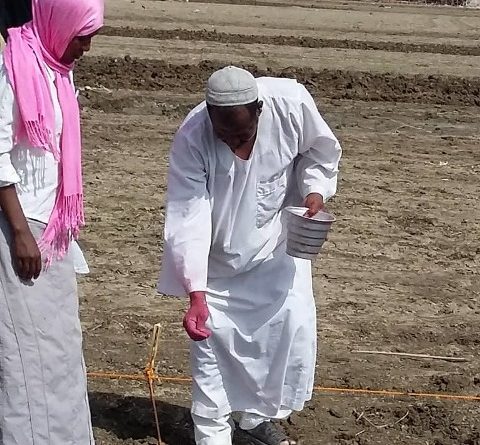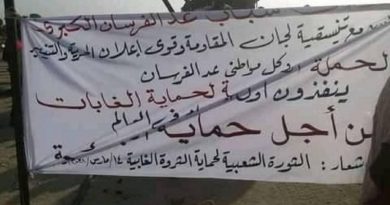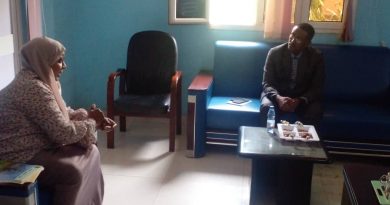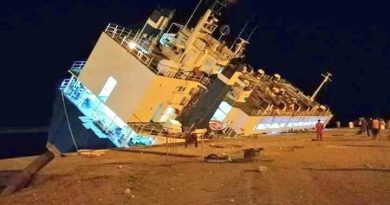Sustainable Development Through The Environment Portal
The Supreme Council for Environment and Natural Resources is implementing a project that is the first of its kind in Sudan. It aims to increase the resilience of communities in vulnerable areas to climate change, using an ecosystem approach in partnership with the White Nile State government and the United Nations Environment Program.
The pilot project will be implemented within the scope of the White Nile State with an estimated funding of 5 million dollars provided by the Global Environment Facility
The project, which was launched in 2017 and will end in 2021, seeks to increase the resilience of communities in areas of vulnerability to climate change and the ability to adapt to climate change in livelihoods and integrated productive agricultural systems using the ecosystem approach. About 8,000 families benefit from the project’s services in 43 villages in the localities of Al-Duaim, Tendelti, Quli and Al-Salam.
The project reflects the political interest shown by the state towards the environment, its health, preservation and sustainability, and that when the government of the transitional period decided to show the extent of its interest and seriousness in the issue of the environment, it did not entrust the presidency of the highest council of the prime minister only, but rather linked that to the approval of the various amendments law for the year 2020 to unify environmental councils for desertification And biosafety and merging it into the Supreme Council for the Environment, and then adding the National Council for the Environment
Accordingly, and based on the provisions of the constitutional document, Professor Rashid Makki Hassan was appointed Secretary General of the Supreme Council for the Environment and Natural Resources, which seeks in light of the new tasks of the integrated councils aimed at preserving the environment and developing the country’s natural resources and fulfilling Sudan’s regional and international obligations by setting environmental plans and strategies and including them in development planning The strategic and environmental impact assessment of development and investment projects in addition to attracting support and funding to implement programs and projects to achieve a set of environmental goals.
In addition to the ongoing activities targeted by the project, which are the construction of excavations, the distribution of various varieties of improved seeds, water harvesting programs, the distribution of improved stoves and improved goats, the rehabilitation of natural pastures and forests, in addition to awareness programs in the agricultural, animal and forest fields, the distribution of shady and fruit trees, etc.
Engineer Ibrahim Belaila, the national director of the project, indicated during a field visit to the Supreme Council for the Environment to the project, which lasted for eight days, that the programs and interventions of the project aim to increase the productivity of farmers and herders, diversify sources of income and food, increase tree cover, reduce pressure on natural resources, raise awareness and improve the economic and social situation For rural women, through improved drought-tolerant agriculture, water harvesting programs, construction of pits, improvement of breeds, rehabilitation of pastures and forests, planting of shady and fruitful trees and distribution of improved stoves.
Belaila pointed out that the recent visit to the project work areas came within the framework of continuous follow-up of the activities carried out on the ground and the provisions of coordination with the project’s partners in the Ministry of Production and Economic Resources and the Drinking Water Authority and Forest Management in the White Nile State.
In addition to participating in the distribution of improved seeds of sesame, groundnut, millet and maize crops on the four localities of the project and plowing muddy lands with water harvesting technology in the south of the state and spreading pasture seeds in an area of 200 feddans in Qali locality and re-cultivation of Mori Umm Zariba (100 feddans) and Umm Naam 5 feddans 5) Spreading the seeds of pastures, fodder and forest trees, indicating that the visit revealed the success of the experiment of goats and fruit trees, the effectiveness of improved stoves, and the end of the suffering of the people by providing drinking water for humans, animals and agriculture.
The plan showed that farmers and herders dependent on rain in White Nile State are particularly vulnerable to climate change due to unsustainable practices, insufficient water and land management, and the lack of alternative livelihood activities. State Project Coordinator Dr. Amna Ahmed Abdullah said that the project is concerned with the environmental balance to restore the state to its previous era and establish a new reality by changing the pattern of society in the excessive use of natural resources, accepting new varieties of seeds and adopting technical packages, as well as upgrading the people of the region to a standard of living that suits the conditions of his life.
It is worth noting that the project is considered the first of its kind in Sudan and is being implemented only in the state of the White Nile. It stems from the national plan to adapt to climate change that was prepared by the Supreme Council for Environment and Natural Resources in 2007, which identified all areas of fragility in Sudan and put in place solutions to address the phenomenon of climate change and singled out the national plan To adapt each region separately to suggest solutions and treatments.




